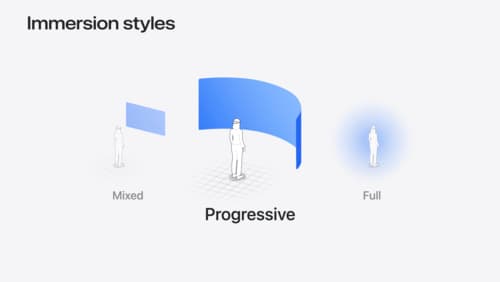what is the file format for 3d immersive worlds
Asked on 2024-08-05
1 search
The file format for 3D immersive worlds, as discussed in the WWDC sessions, is USD (Universal Scene Description). There are multiple types of USD file formats, each suited for different purposes:
- USDZ: A zip format that packages all dependencies for an asset, such as textures, into an internal file structure. It is great for AR assets.
- USDC: A binary format that is efficient for storing large amounts of data, such as geometry.
- USDA: An ASCII format that can be read as plain text, making it suitable for collaborative files where multiple people might be making edits.
For more details, you can refer to the session Optimize your 3D assets for spatial computing (03:55).

Dive deep into volumes and immersive spaces
Discover powerful new ways to customize volumes and immersive spaces in visionOS. Learn to fine-tune how volumes resize and respond to people moving around them. Make volumes and immersive spaces interact through the power of coordinate conversions. Find out how to make your app react when people adjust immersion with the Digital Crown, and use a surrounding effect to dynamically customize the passthrough tint in your immersive space experience.

Create custom environments for your immersive apps in visionOS
Discover how to create visually rich and performant customized app environments for Apple Vision Pro. Learn design guidelines, get expert recommendations, and explore techniques you can use in any digital content creation tool to begin building your immersive environment.

Build immersive web experiences with WebXR
Discover how WebXR empowers you to add fully immersive experiences to your website in visionOS. Find out how to build WebXR experiences that take full advantage of the input capabilities of visionOS, and learn how you can use Simulator to test WebXR experiences on macOS.
